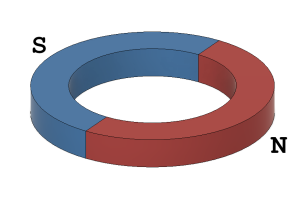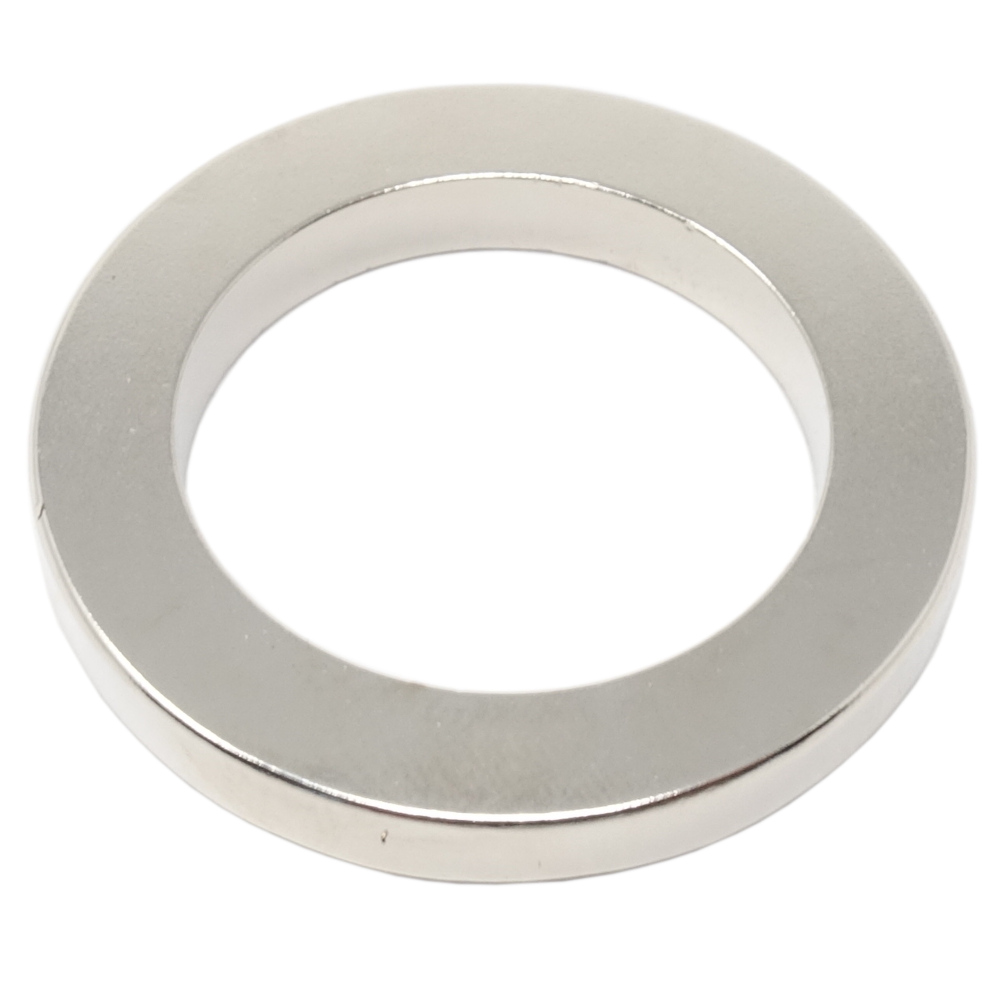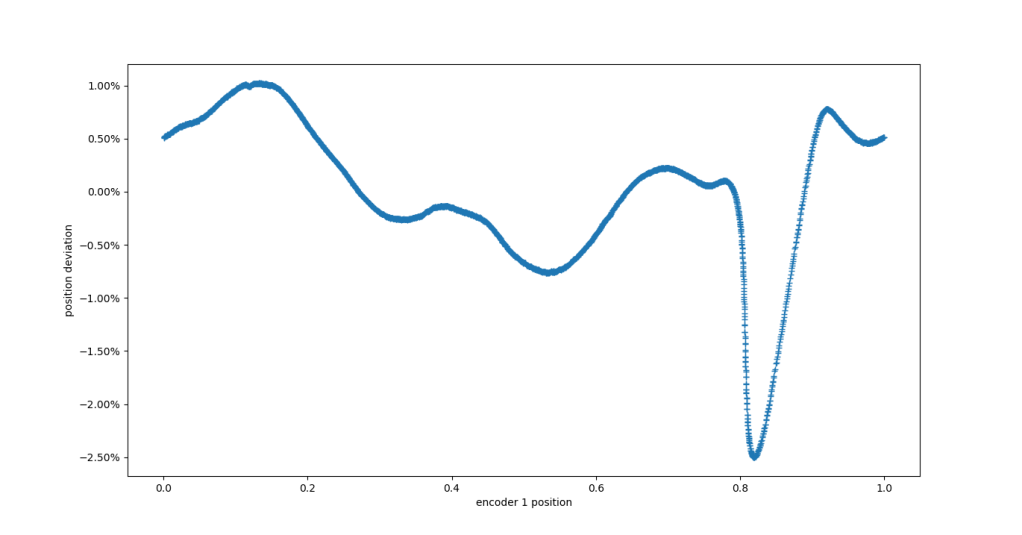I’ve been exploring how to add low cost off-axis encoder support into moteus, see part 1, and part 2. In this part, I’ll look at a magnet and how to get it installed on the test motor.
To start, this method of operation will require a diametrically magnetized ring magnet, i.e. one where the axis of magnetization is through the diameter rather than through its depth.

That is not a terribly common magnet configuration, but there are some vendors. For this experiment, I used a 32mm OD ring magnet from RLS that is intended for use with their Orbis line of encoders, part number BM220C320A1ABA00. The motor I am using for this test is a T-Motor GL80, which has a hollow shaft. To mate the magnet to the motor, I 3d printed a fixture (purple) which slipped over the bearing surfaces of the GL80 (pink), and captured the magnet (red).



